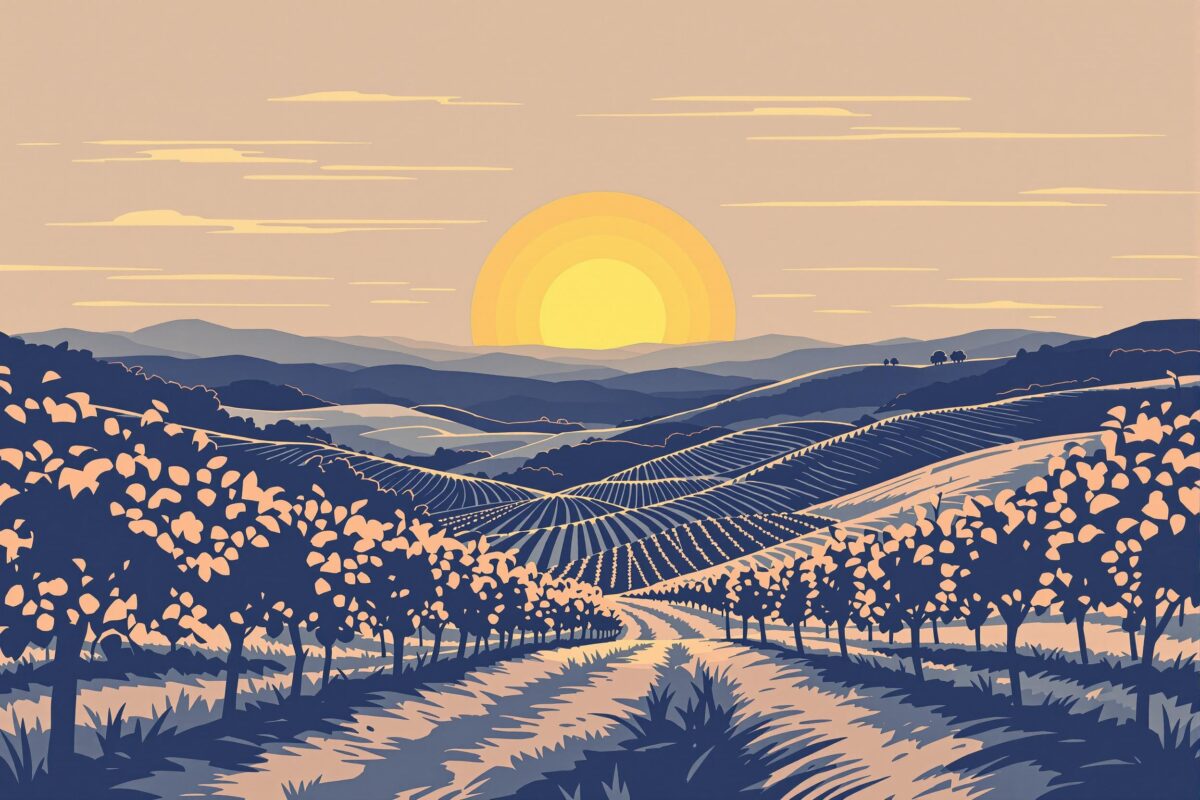Unlocking Vintage Wine Quality
Wine connoisseurs understand: a vintage year is more than just a number. It’s a snapshot of time, capturing the unique interplay of terroir and winemaking expertise. This intricate dance shapes a wine’s character, depth, and complexity. Whether you’re a seasoned collector or simply curious, understanding vintage relevance unlocks a deeper appreciation for the world of wine. Join TourDeWine, your premier online destination for collectible wines and vintage treasures, as we explore this fascinating subject.
Trend Analysis: Current Practices and Emerging Techniques in Vintage Winemaking
Modern winemaking is experiencing a renaissance, embracing the profound impact of terroir. Minimal intervention is the mantra, allowing the vineyard’s distinct personality to shine through in each vintage. Sustainable and biodynamic practices further amplify terroir expression, producing wines that truly speak of their origin. What’s particularly exciting is the rise of innovative techniques like perpetual reserve (solera) systems in sparkling wine production. Blending wines from multiple vintages creates a complex, consistent house style while preserving subtle vintage variations. This contrasts sharply with the traditional focus on single vintages, offering a fresh perspective on vintage relevance. From soil composition and climate to topography and biodiversity, every aspect of terroir is now meticulously considered. Winemakers tailor their decisions – from grape harvesting to fermentation – to complement the vineyard’s inherent qualities. This shift towards site-specific, vintage-conscious winemaking emphasizes the unique narrative woven into every bottle.
In-Depth Issue Breakdown: Factors Influencing Vintage Wine Quality
Crafting exceptional vintage wine isn’t a given; it’s a delicate balancing act influenced by numerous factors. Climate variability plays a pivotal role. Think spring frosts, summer heatwaves, drought, or excessive rain—each directly impacts grape development, yield, and ultimately, the wine’s quality. A favorable vintage typically enjoys a long, consistent growing season with moderate temperatures and just the right amount of rainfall, allowing grapes to reach peak ripeness. Challenging vintages, however, contend with extreme weather, often yielding wines with less concentration, balance, or aging potential. Even the grape variety matters. Some thrive in warmer climates, while others prefer cooler conditions. The right grape in the right place at the right time is a key factor in achieving vintage wine excellence. And let’s not forget the winemaker’s touch. Even in ideal years, poor winemaking can compromise quality. Conversely, skilled hands can salvage challenging vintages, crafting wines that still express their unique character. Vintage wine quality, then, is a complex interplay of climate, grape variety, terroir, and winemaking skill—a true reflection of nature and human ingenuity.
Innovative Solutions: Advanced Aging Approaches and Market Adaptations
The wine world never stands still. Innovation is constant, particularly in aging techniques. Beyond traditional French and American oak, winemakers experiment with Hungarian, Russian, and even acacia oak to impart unique flavor nuances. Micro-oxygenation, a controlled introduction of oxygen during aging, softens tannins and enhances color stability, particularly in reds. Oak alternatives like staves, chips, and powders offer cost-effective ways to add oaky notes without the investment in new barrels. The key? Using oak judiciously to complement, not overpower, the wine’s natural fruit and terroir. Market trends also shape the industry. Consumers are increasingly interested in vintage characteristics and terroir-driven wines, demanding transparency and detailed information. Platforms like TourDeWine connect enthusiasts with collectible vintage wines, providing valuable information, tasting notes, and provenance details. Wineries are also adapting to climate change by exploring drought-resistant grapes, water-efficient irrigation, and vineyard management practices that bolster resilience to extreme weather.
Visual Comparisons: Grapes to Cellar – The Vintage Wine Journey
The journey from grape to glass is a visual testament to the influence of vintage. Picture a harvest in an exceptional year: uniformly ripe grapes, vibrant colors, plump berries. Contrast that with a challenging vintage, where uneven ripening, smaller berries, or signs of weather stress might be evident. These visual cues continue in the winery, where fermentation vigor and color intensity reflect vintage conditions. Oak maturation reveals further distinctions, with variations in color and tannin structure. Even in the cellar, vintage wines evolve visually, their color and sediment reflecting the passage of time. Comparing different vintages side-by-side highlights the impact of time and terroir. TourDeWine offers a curated selection, allowing you to experience these differences firsthand.
Practical Tips: Identifying Quality Vintages and Storage Solutions
So, how do you navigate the world of vintage wines? Research is key. Consult reputable vintage charts and regional reports to understand the climatic conditions of specific years. Consider the grape variety and region, as some are more susceptible to vintage variation than others. Look for producers known for consistent quality, regardless of the vintage. And don’t forget to read reviews and tasting notes, paying close attention to vintage-specific comments. Proper storage is equally crucial. Maintain a cool, dark environment with consistent temperature and humidity. A dedicated wine refrigerator or cellar is ideal. Store bottles horizontally to keep corks moist and prevent oxidation. For long-term cellaring, consider professional storage facilities. TourDeWine provides resources and guidance on both vintage selection and storage, helping you preserve and enjoy your collection.
